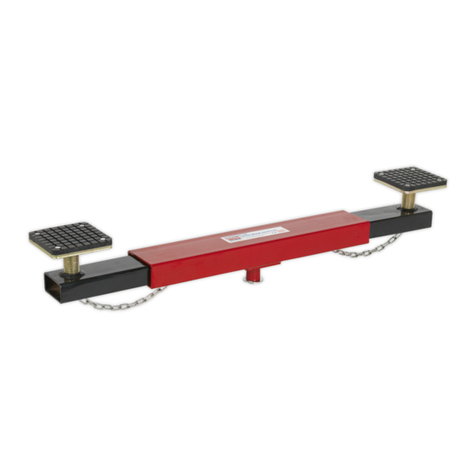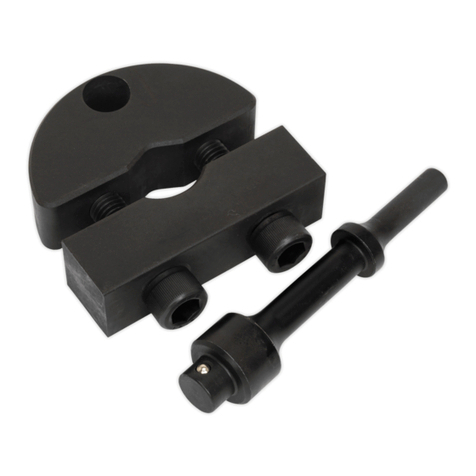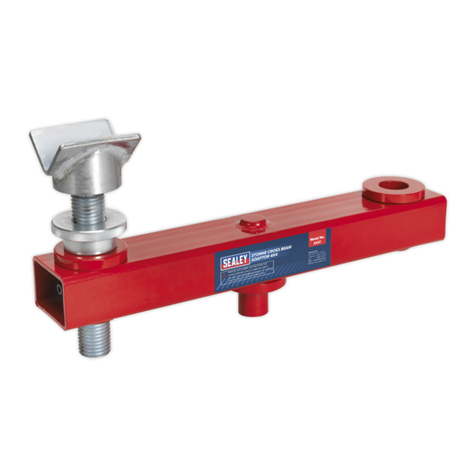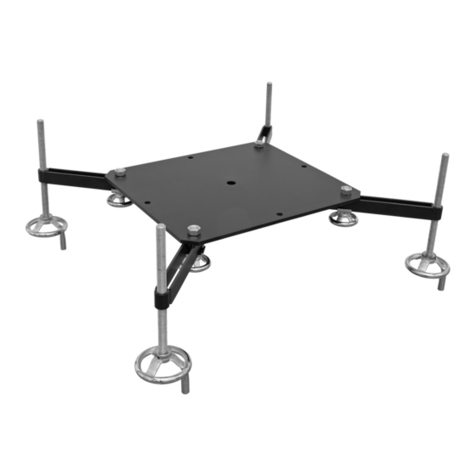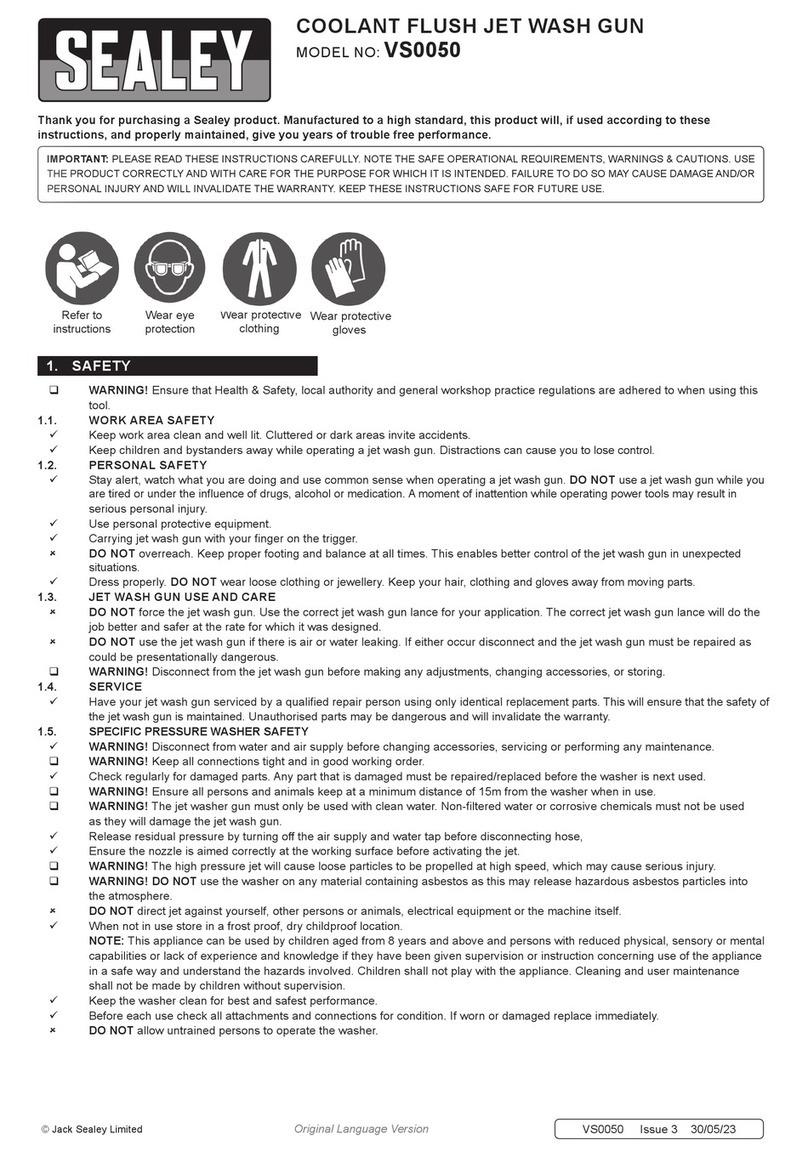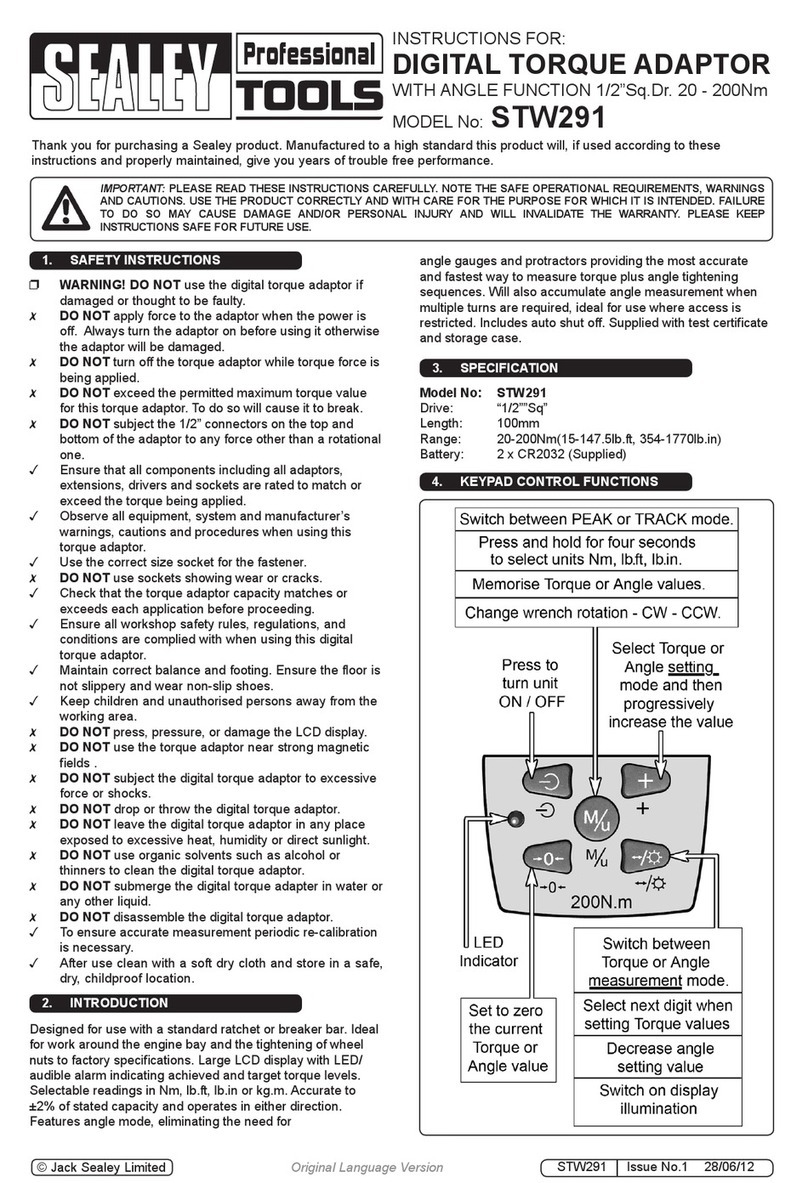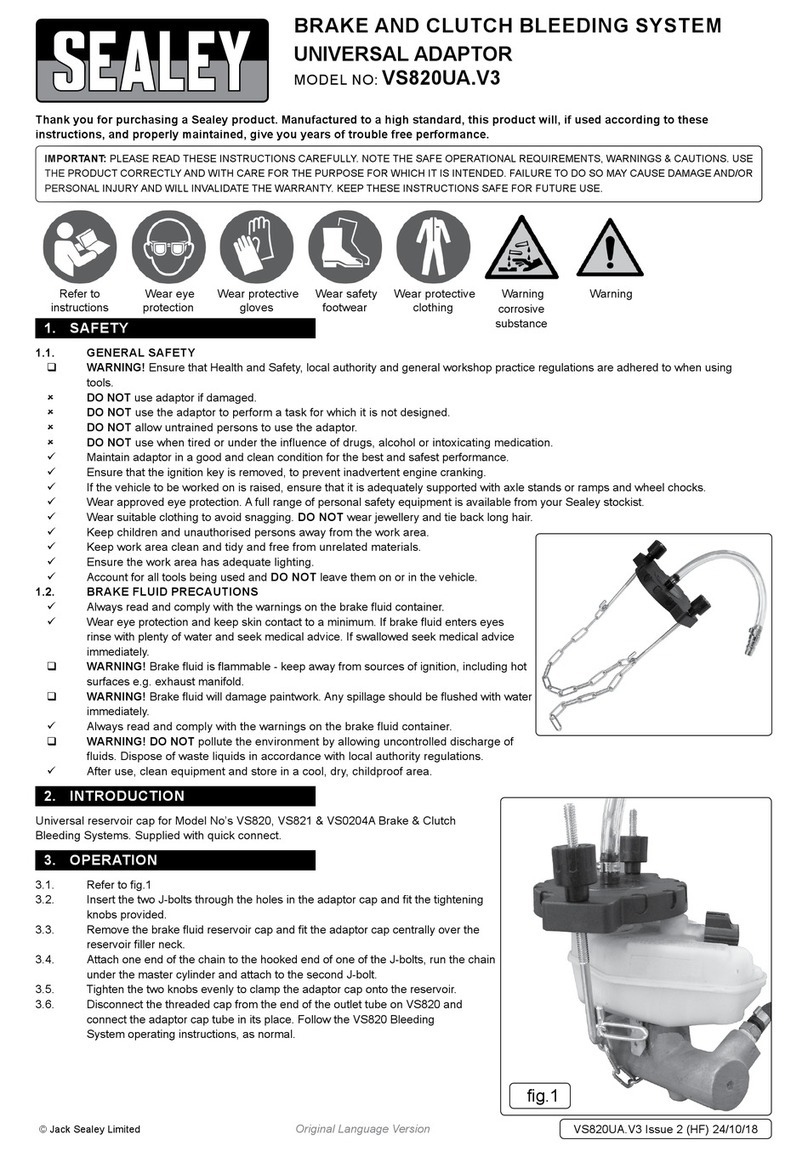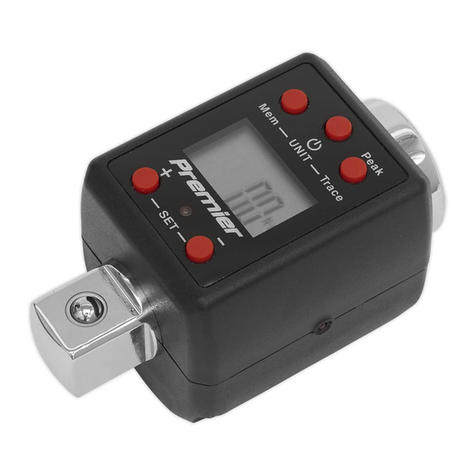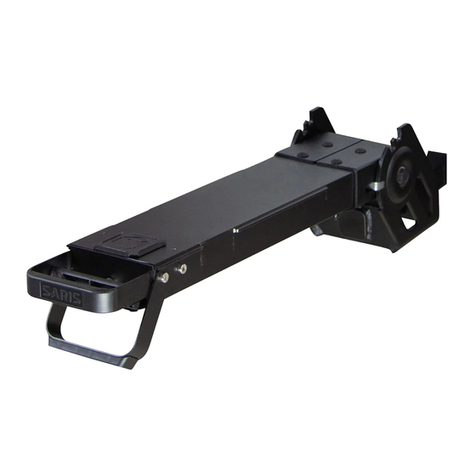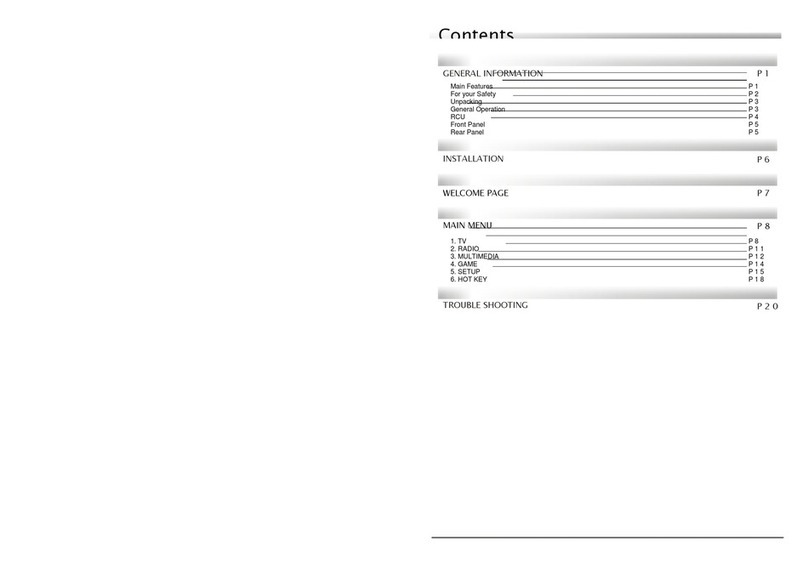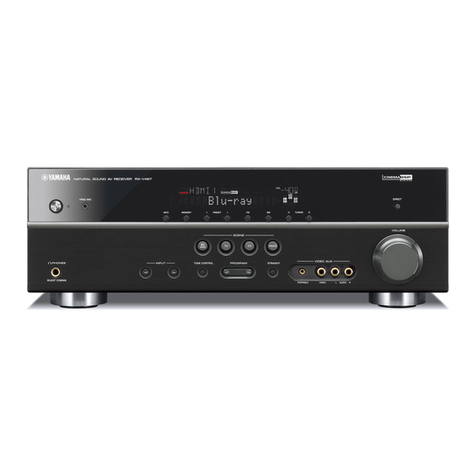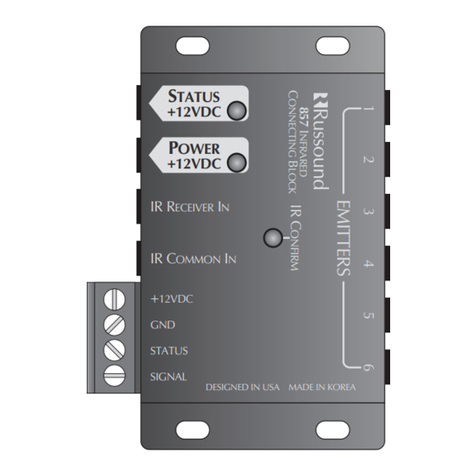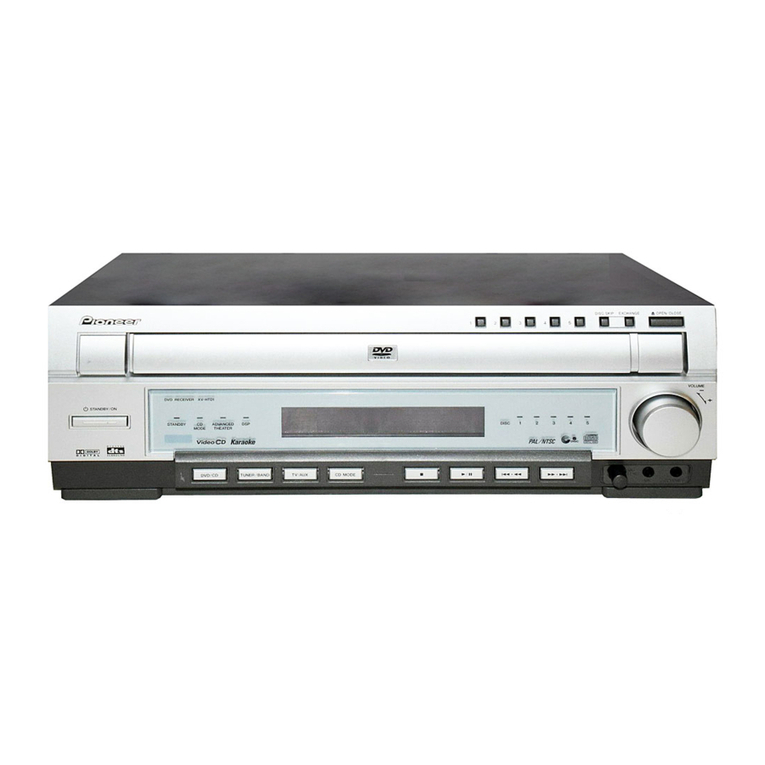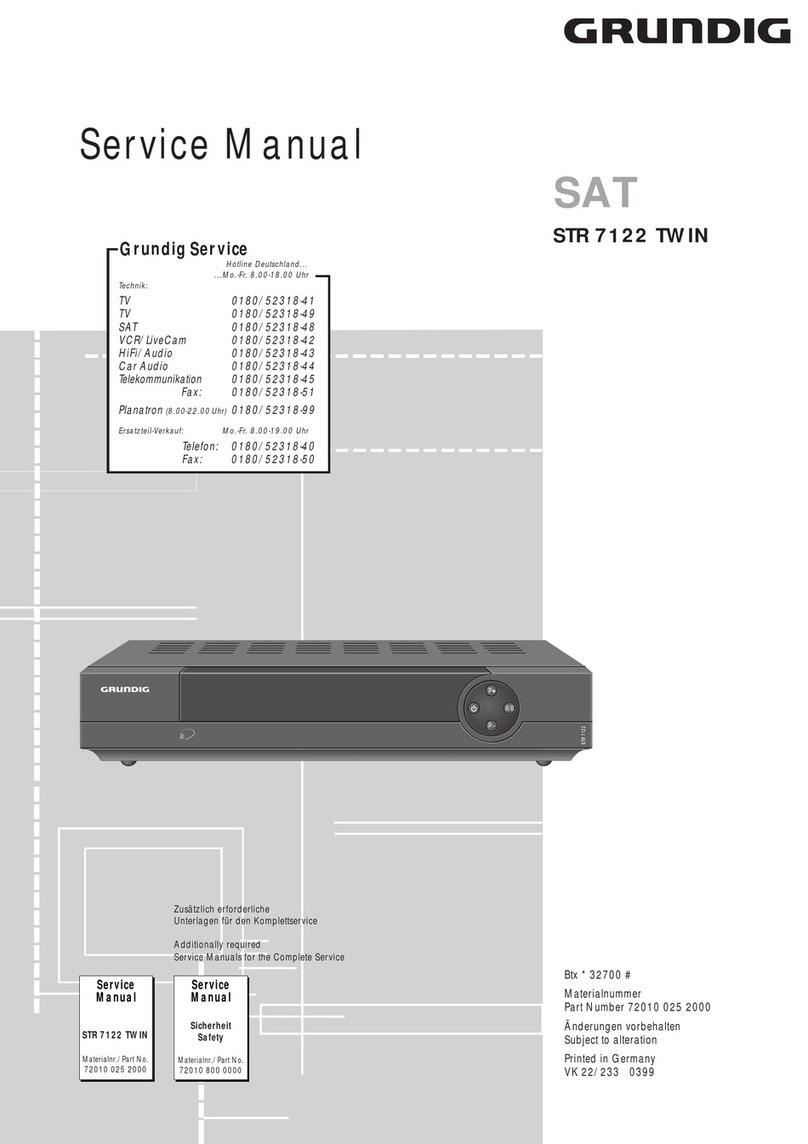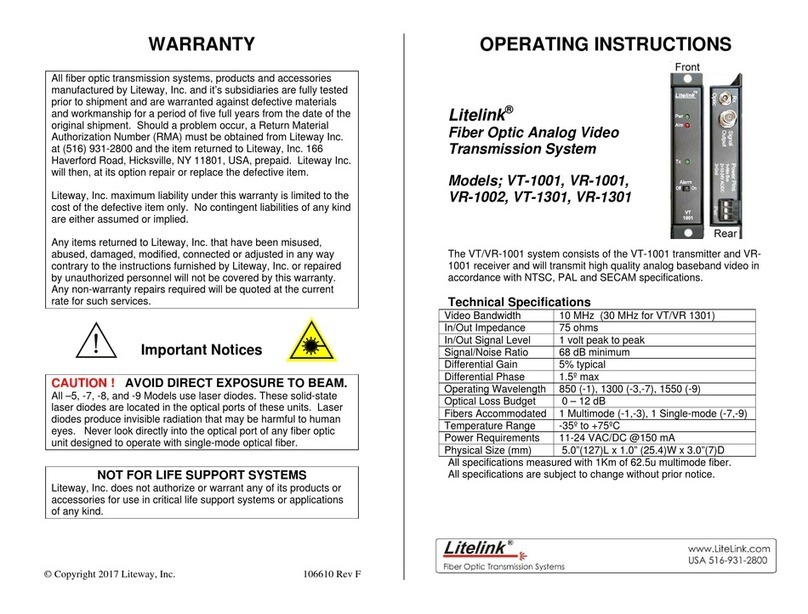
Sealey Group, Kempson Way, Suffolk Business Park, Bury St Edmunds, Suffolk. IP32 7AR
01284 757500 sales@sealey.co.uk www.sealey.co.uk
ENVIRONMENT PROTECTION
Recycle unwanted materials instead of disposing of them as waste.All tools, accessories and packaging should be sorted,
taken to a recycling centre and disposed of in a manner which is compatible with the environment. When the product
becomes completely unserviceable and requires disposal, drain any fluids (if applicable) into approved containers and
dispose of the product and fluids according to local regulations.
Note: It is our policy to continually improve products and as such we reserve the right to alter data, specifications and component parts without prior
notice. Please note that other versions of this product are available. If you require documentation for alternative versions, please email or call
our technical team on technical@sealey.co.uk or 01284 757505.
Important: No Liability is accepted for incorrect use of this product.
Warranty: Guarantee is 12 months from purchase date, proof of which is required for any claim.
REGISTER YOUR
PURCHASE HERE
VSE3152 Issue 2 05/04/23
Original Language Version
© Jack Sealey Limited
4. INSTRUCTIONS
4.1. OVERVIEW OF COMPRESSION TESTING.
4.1.1. When an engine’s performance is down, or if misring occurs which cannot be attributed to the ignition or fuel systems, a
compression test can provide diagnostic clues as to the engine’s condition.
4.1.2. Compression should build up quickly in a healthy engine.
4.1.3. A very low compression reading on the rst stroke, followed by gradually increasing pressure on successive strokes, indicates worn
piston rings.
4.1.4. A low compression reading on the rst stroke, which does not build up during successive strokes, indicates leaking valves or a
faulty head gasket (a cracked head could also be the cause).
4.1.5. Deposits on the undersides of the valve heads can also cause low compression.
4.1.6. If the pressure in any cylinder is considerably lower than the others, introduce a small quantity of clean oil into that cylinder through
the glow plug hole, and repeat the test. If the addition of oil temporarily improves the compression pressure, this indicates that bore
or piston wear is responsible for the pressure loss. If there is no improvement, it suggests that the leakage is around the valves, or a
faulty head gasket.
4.1.7. A low reading from two adjacent cylinders suggests a faulty head gasket between the two cylinders. The presence of coolant in
the engine oil will conrm this.
4.1.8. If the compression is unusually high, the combustion chambers are probably coated with carbon deposits. If this is the case, the
cylinder head should be removed and de-carbonised.
4.1.9. As a rough guide, engines having a compression pressure in excess of 100psi (6.9 bar), should not exceed a compression loss of
more than 10psi (0.69 bar). On older engines with lower compression pressure, loss should not exceed 0.35 bar (5psi).
4.2. COMPRESSION TESTING.
4.2.1. Check the engine oil is at the correct level.
4.2.2. Remove all of the glow plugs from the engine.
4.2.3. Select the applicable adaptor and screw it into the rst glow plug port, ensuring there is a good seal with the O-ring (if tted). Connect
the coupling on the pressure gauge hose to the adaptor, ensuring it locks into place.
4.2.4. Turn over the engine using the starter motor and observe the gauge, looking for a steady increase in the reading, and note
the maximum reading obtained. Refer to the vehicle/engine manufacturer’s workshop manual for compression results data.
4.2.5. Depress the Re-set Valve (situated under the gauge) to release the pressure. The Re-set Valve allows the test to be repeated if
required without disconnecting the tester from the glow plug port.
WARNING! Always release pressure via the Re-set Valve BEFORE disconnecting the Tester.
4.2.6. Disconnect the compression tester from the adaptor and remove the adaptor from the glow plug port. Install them into the next
cylinder’s glow plug port and repeat the tests. Continue the tests for all of the remaining cylinders in turn.
NOTE: A variation in compression readings between cylinders is often a better indication of engine problems than the individual values of
compression.
4.3. TDC INDICATOR TOOL.
4.3.1. Remove the glow plug from cylinder number 1. It may also be necessary to remove all glow plugs to facilitate manual turning over
of the engine.
4.3.2. Select the applicable adaptor from one of the accompanying kits and screw it into the glow plug port of cylinder number 1. Ensure
that there is a good seal with the O-ring (if tted). Connect the coupling on the TDC nder to the adaptor, ensuring it locks into
place.
4.3.3. Position the indicator in a vertical position, in a suitable viewable location, using the magnetic hook if needed.
4.3.4. Turn the engine over manually, using a spanner or socket on the crankshaft pulley, in the direction of engine rotation and watch for
the oat to rise in the tube. As the piston rises on the compression stroke, the oat will rise to the top of the tube and stay there,
when the piston goes past TDC and compression is lost, the oat will suddenly sink. Note position and temporarily make
suitable marks to indicate TDC, or compare with existing timing marks.
4.3.5. Turn the engine over a further 1¾ turns and the oat should start to rise again as the piston rises on the compression stroke.
Continue to slowly turn the crankshaft towards TDC (watching the timing marks) - note the exact point when the oat drops. Alter
the timing mark if required.
4.3.6. Repeat the procedure, turning the engine over a further 2 turns to re-check for accuracy.
4.3.7. Disconnect the TDC tool from the adaptor and remove the adaptor from the glow plug port.
